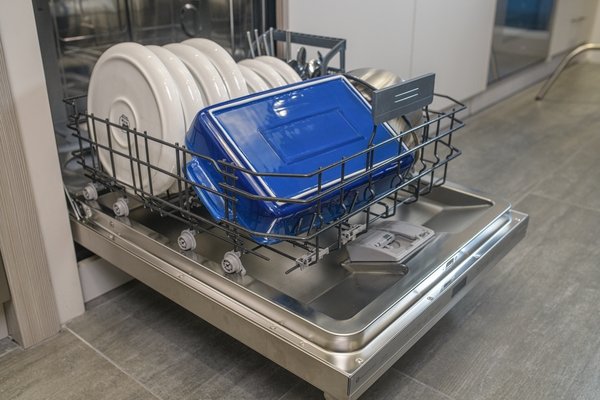Why Is My Dishwasher Pod Not Dissolving? 5 Causes and Solutions

Dishwasher pods are designed to offer a more convenient way to clean dishes compared to traditional detergents. However, if you’ve ever opened your dishwasher only to find the pod still intact, you may start questioning its effectiveness. What causes this issue? Here are five common reasons your dishwasher pod might not be dissolving properly.
1. Damp or Sticky Dispenser
A damp or sticky dishwasher dispenser can cause the pod to become lodged in the compartment, preventing it from dissolving as intended.
How to Fix It
To ensure the pod dissolves properly, first, clean any leftover residue from the dispenser using a damp cloth. Afterward, thoroughly dry the compartment with a clean cloth before placing the new pod inside.
2. Water Isn’t Hot Enough
For dishwasher pods to dissolve properly, the water temperature needs to stay between 120°F and 160°F throughout the cycle. If the water isn’t reaching the right temperature, the pods may not break down completely.
Several factors could be responsible for this issue. It might stem from a malfunctioning component in the dishwasher, such as the heating element or thermostat. Another possibility is an issue with your home’s water heater, preventing the water from getting hot enough.
How to Fix It
Start by checking the water temperature to determine if it’s the cause of the pod not dissolving. Fill a glass with hot water from the kitchen sink or the faucet closest to the dishwasher, then use a meat thermometer to measure the temperature. If it doesn’t reach at least 120°F, that’s likely the problem.
To resolve this, inspect your water heater’s settings—it should be set between 120°F and 140°F. If it’s too low, adjust it accordingly and repeat the temperature test. Should the water still not heat up enough, there may be an issue with a dishwasher component, and a professional SD Appliance Repair’s inspection might be necessary.
3. Dirty or Damaged Spray Arms
The spray arms in a dishwasher spin and distribute water through small openings to thoroughly clean the dishes. However, if food debris blocks these openings, water flow can be restricted, preventing the pod from dissolving properly. A similar issue can occur if the spray arm is damaged, affecting its ability to function efficiently.
How to Fix It
To clean a clogged spray arm, first, detach it from the dishwasher—refer to the user manual if needed. Use a paperclip to clear any debris from the holes, then wash the spray arm thoroughly with warm water and dish soap.
If the spray arm is cracked, warped, or otherwise damaged, replacing it is a straightforward process. Simply remove the old one and secure the new part in place. For exact installation steps and compatible parts, consult the manufacturer’s guidelines.
4. Broken or Blocked Dispenser
The dispenser is designed to open during the wash cycle to release the pod. However, if it’s faulty or obstructed by dishes, it may not function properly. As a result, the pod can remain trapped inside, preventing it from dissolving as intended.
How to Fix It
If the dispenser isn’t working properly, you can either replace it yourself or hire a professional for the job. The replacement process varies by model but generally involves turning off the dishwasher’s power, removing the outer door panel, taking out the faulty dispenser, and installing a new one.
To keep dishes from blocking the dispenser, be mindful of how you load the dishwasher. Avoid overcrowding, and position taller items like cutting boards and casserole dishes along the sides rather than directly in front of the dispenser.
5. Malfunctioning Circulation Pump
The circulation pump is responsible for directing water into the spray arms to ensure effective dishwashing. If the pump isn’t functioning correctly, there may be insufficient water flow to break down the dishwasher pod. This can also lead to poor cleaning performance overall.
How to Fix It
Pay attention to the sounds your dishwasher makes during a cycle. If you don’t hear water flowing, it could indicate a malfunctioning circulation pump. Fixing or replacing this pump involves working with electrical components, so it’s recommended to hire an SD Appliance Repair professional for the repair.
When to Call a Pro
Many of these problems can be resolved on your own. For instance, you can dry the dispenser, adjust the water heater’s temperature, or load the dishwasher more effectively without professional help. However, if you’re dealing with electrical issues or if your previous attempts haven’t solved the problem, it’s wise to consult a professional who specializes in dishwasher repairs.
You Appliance Will Be Fixed!
in San Diego, CA
REQUEST SERVICE
Book a Repair Appointment

